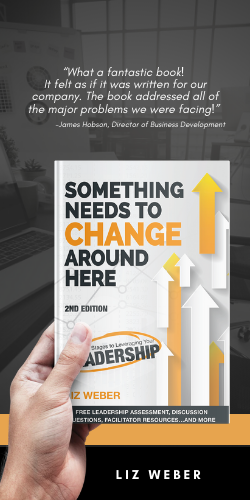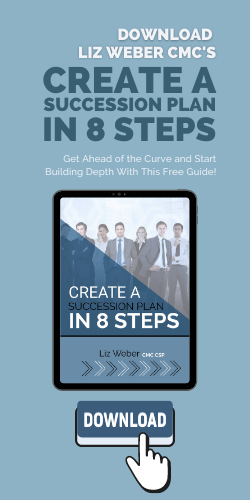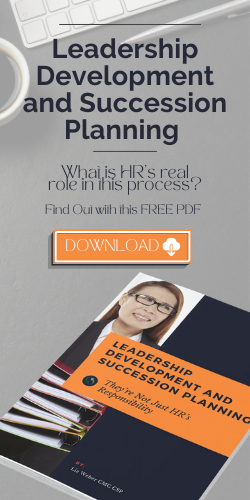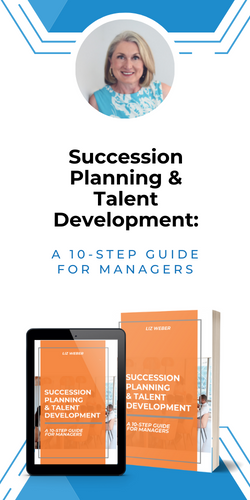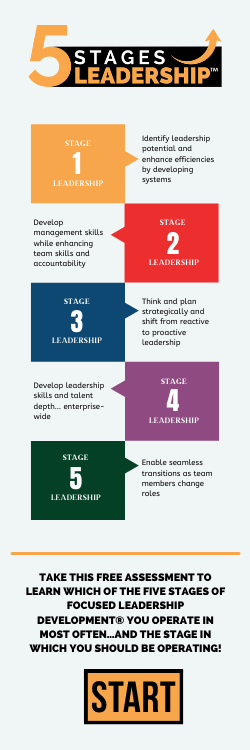I was recently asked by an executive team,
“How do we start pulling a Succession Plan together? We believe we have many of the pieces already, but we don’t know what to do with them.”
That’s a great question and a great position to be in. The answer though, requires you to first be clear on what you really want your Succession Plan to do for you. Once you’re clear on that, you can then better appreciate how to start.
When most people think of Succession Plans, they imagine some document that outlines who’s going to step up into a vacant spot when the current position-holder retires, moves up him or herself, or experiences the “hit by a bus” scenario – which is any emergency or unexpected situation that requires someone else to quickly step in temporarily or long-term. That singular focus type of plan is great and basically outlines who some of your “fall back” or “go to” people may be. That’s good to know when you need to make a quick personnel decision.
The other and more comprehensive purpose for succession planning is to not only create the above document, but to also plan for acquiring, recruiting, or developing internally the skills your organization will need as it continues to move forward. So instead of just filling a spot with someone who can hold things together, you’re creating depth and talent throughout your organization. This will allow you to have a pool of individuals with high-level, broad-based skills capable of filling one or more positions within your organization. This provides greater flexibility, increases employee knowledge and skills, and also increases employee commitment to the organization.
So, back to the initial question: “How do we start pulling a Succession Plan together?” I’d suggest you follow four initial steps:
- Plot Your Organization Chart
Print out your organizational chart as it needs to be to support your organization 3-5 years from now. This updated chart should reflect the organizational structure or position and responsibility mix you believe you need going forward. In each box, list the position title. Below that, first list the current position holder (if you believe that person will continue in the position going forward). Second, below the current incumbent, list one, two or three people – who individually or collectively – can step in quickly to keep things running temporarily. Third, list the names of individuals who have the potential to be viable candidates for the position long-term — if they have more time, training, and development opportunities. Next, highlight in green, any of the names (including the incumbent’s) if they are currently capable of stepping in and competently and independently fulfilling the position’s responsibilities (Green means ‘Go’). Highlight the names of anyone who needs additional training and development in yellow (Yellow means ‘Not Yet Ready’). Highlight in red, the names of anyone who is currently incapable of fulfilling the duties/responsibilities required of them for the role. Also, if you have no name to put in a box, put “???” and highlight the “???” in red (Red means ‘Stop = Hot Spot’). - Assess Your Chart
Review your color-coded organization chart. How much red are you seeing? Are you also seeing situations where you have one back-up person identified, but that person is planning to retire within the next few years? Do you have several positions where only one person knows or does the job and you simply don’t have any other employees? In this type of situation, if you lose that person, who’s going to do the work? - Prioritize Your Plan
For any position boxes that have more red than green or yellow, highlight the entire box in red or some other obvious color. - Plot Your Plan
Review the highlighted areas to determine “Hot Spots” or priority areas. These Hot Spots are areas or positions that need attention quickly to develop skills, transfer knowledge, initiate cross-training and mentoring, or at a bare minimum, document critical procedures.
If you use this same process with your current organizational structure, you will also see where your current Hot Spots are. Which positions are vulnerable if the current employees are out or unavailable? Which positions are have multiple people capable of stepping in. Which areas need attention – now? Those that do, most immediately need to simply organize their filing systems, create basic procedures & checklists that others can follow, if needed, to keep that function moving. Slim staffing isn’t an excuse for not having clean systems and basic support documentation in place.
Though the above is a quick overview, once you know what you have – or don’t have – you’re better able to know where to start in Succession Planning. Be clear on what you want the plan to do. Then use your organizational chart to plot the direction and immediacy of your plan.
Plot your plan to your future success.
Copyright MMVIII – Liz Weber, CMC, CSP – Weber Business Services, LLC – www.WBSLLC.com +1.717.597.8890
Liz supports clients with strategic and succession planning, as well as leadership training and executive coaching.












